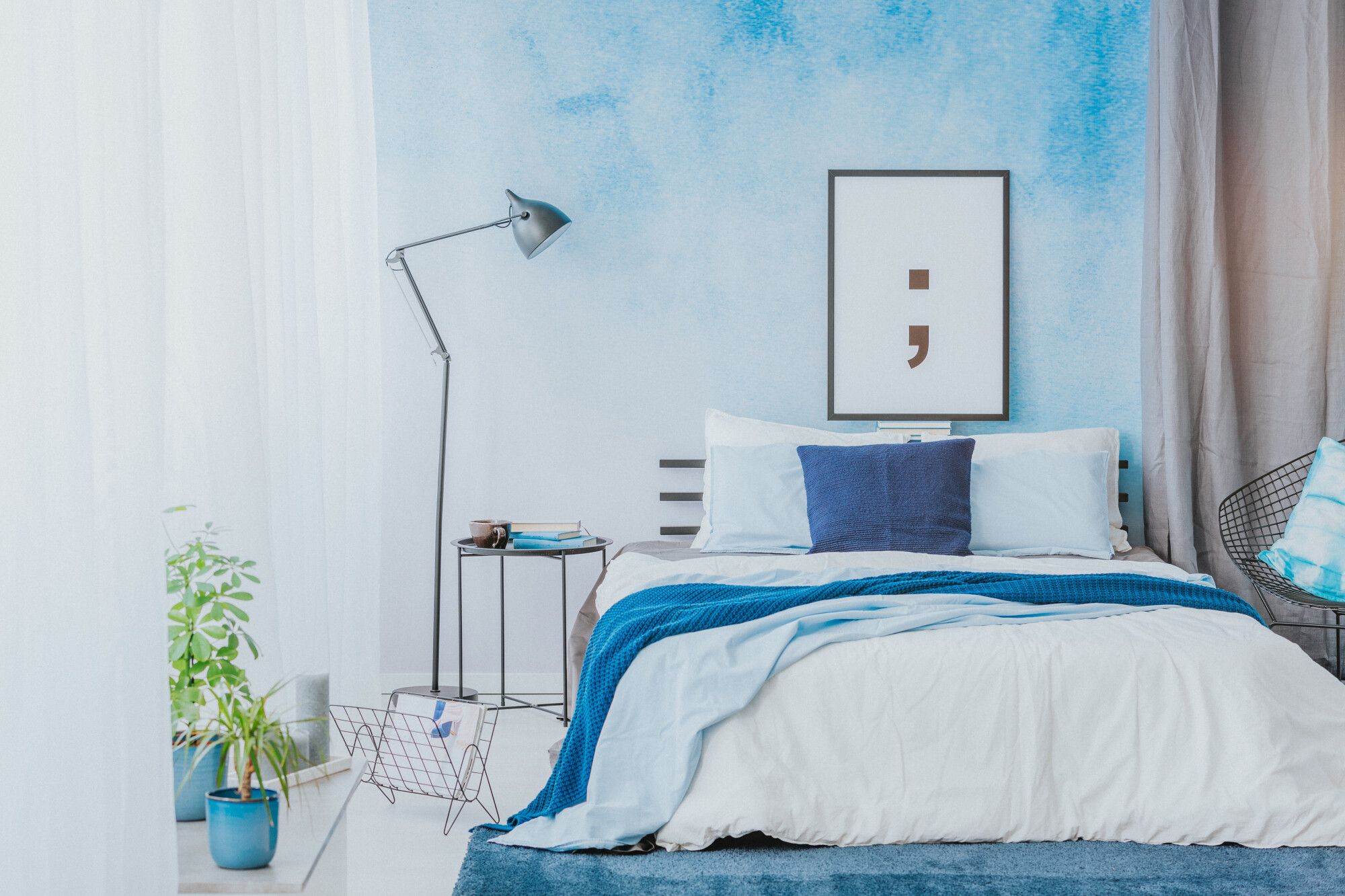
How Lighting Influences Your Living Spaces
Lighting is a powerful element in home design. It can transform a room from a functional space to a cozy haven, boost productivity, or create a tranquil retreat. Understanding the types of lighting and their uses can help you enhance the feel and functionality of your home.
Types of Lighting and Their Uses
Ambient Lighting: This is the main source of light in a room, usually provided by ceiling fixtures. It sets the baseline illumination level and is crucial in creating an inviting atmosphere.
Task Lighting: As the name implies, task lighting is focused on areas where you perform tasks, such as under-cabinet lights in the kitchen or a reading lamp by your favorite chair.
Accent Lighting: Used to highlight architectural features or artwork, accent lighting adds depth and dimension to a room.
Setting the Mood with Ambient Lighting
Ambient lighting is often referred to as the ‘natural light’ of the interior space. It’s the soft glow that blankets your space just enough for you to function without causing a harsh glare. In a way, it sets the stage for your interior décor and is the foundation of lighting design.
Ideas to Enhance Ambient Lighting:
- Use dimmer switches to adjust the light levels throughout the day. Dimming the lights can create a more relaxed and comfortable atmosphere.
- Consider using LED strip lights to create a soft, indirect light that doesn’t overpower the room.
- Choose the right shade for ceiling fixtures to diffuse light and create a warm, welcoming environment.
Illuminating Tasks with Task Lighting
Task lighting is all about functionality. Whether you’re chopping vegetables, reading a book, or working on a craft, task lighting adds brightness to specific areas, enhancing visibility and reducing eye strain.
Lighting Ideas for Functionality:
- Under-cabinet lights in the kitchen can provide focused illumination for food preparation.
- Desk lamps with adjustable arms can direct light exactly where you need it in a home office.
- Vanity lights around bathroom mirrors ensure even, shadow-free lighting for grooming.

Accentuating Details with Accent Lighting
Accent lighting is the cherry on top of your lighting scheme. It’s used to highlight the architectural features of your home or spotlight artwork, creating visual interest and drawing the eye to specific areas.
Creative Accent Lighting Tips:
- Directional recessed lights or wall-mounted lights can be used to emphasize paintings or wall art.
- Use track lighting to feature architectural details or collections on shelves.
- Outdoor accent lighting can highlight landscaping or the architectural features of your home’s exterior.
The Emotional Influence of Lighting
The strategic use of these lighting types goes beyond mere visibility. Light can evoke a range of emotional responses. Warm lighting can create a cozy, serene atmosphere conducive to relaxation or intimate conversations. In contrast, bright white lighting can stimulate alertness and concentration, ideal for a home office or kitchen.
Lighting Ideas to Influence Your Home’s Atmosphere:
- For a calm and peaceful bedroom, use ambient lighting with a warm color temperature and add bedside lamps for task lighting.
- To make a living room feel inviting, combine ambient light with soft accent lighting to highlight art or plants.
- In areas where focus is required, like a study or kitchen, ensure there is generous task lighting with cooler tones.
Choosing the Right Lighting for Different Rooms
Living Room: A combination of all three types of lighting works best here. Ambient lighting for overall brightness, accent lights for showcasing artwork, and task lighting for reading or other activities.
Kitchen: Task lighting is essential. Consider brighter, more direct lights over work surfaces and softer ambient lighting for dining areas.
Bedroom: Soft ambient light is soothing, with task lighting by the bed for reading.

Living Room: The Versatile Space
The living room often serves multiple purposes – it can be a place for relaxation, socializing, or even working. A combination of a large, central fixture with softer wall sconces can provide a base layer of ambient light. Supplement this with floor lamps beside seating areas for reading, which add not only functionality but also style and character. For evenings, consider an artistic table lamp to provide a gentle glow and create a calming ambiance.
Kitchen: Precision and Warmth
Kitchens require precise task lighting for food preparation, along with warm ambient lighting to enhance the room’s social aspect. Recessed ceiling lights or pendant fixtures can provide overall illumination, while LED strips under cabinets or directed spotlights over worktops ensure no shadowy areas interfere with cooking tasks. A dimmable central pendant can offer a warm ambiance for dining or socializing in a kitchen-diner setup.
Bedroom: A Sanctuary of Calm
In the bedroom, a serene environment is key. Opt for warmer light sources that encourage relaxation. A central diffused light fixture provides a soft ambiance, while bedside lamps or wall-mounted reading lights offer focused illumination for reading or winding down before sleep. Avoid harsh lighting and consider using bulbs with a color temperature that encourages sleep.
Bathroom: Clarity and Ambiance
The bathroom needs clear, shadow-free lighting for grooming. Overhead lights paired with side lights or illuminated mirrors can provide even lighting across the face. For a touch of luxury, consider a small chandelier or decorative wall lights that can serve as mood lighting when you want to unwind in the bath.
Home Office: Function and Focus
A home office calls for lighting that reduces eye strain and promotes concentration. An adjustable desk lamp can direct light exactly where it’s needed, while overhead lighting keeps the room well-lit without glare. Natural light should be maximized here, but with options to control it, like blinds or curtains, to prevent screen glare.
Dining Room: Setting the Scene
In dining rooms, lighting should create an atmosphere conducive to enjoyable meals. A statement pendant or chandelier above the dining table can serve as a focal point and conversation starter. Wall lights or a dimmer switch can adjust the room’s mood to transition from bright family lunches to intimate dinner parties.
Outdoor Spaces: Safety and Ambiance
Outdoor lighting requires a balance between safety and ambiance. Pathway lights can guide guests and prevent tripping, while uplighting can accentuate landscaping or architectural details. For entertaining areas, string lights or lanterns offer a festive atmosphere.

Light Fixture Options to Achieve Desired Lighting
- Chandeliers and Pendants: Add drama or a focal point to a room, available in designs from classic to contemporary.
- Recessed Lighting: Offers a clean, streamlined look for ambient lighting.
- Wall Sconces: Provide additional light while contributing to the style of the room.
- Floor and Table Lamps: Flexible options for task and accent lighting, easy to change and move as needed.
- Track Lighting: Versatile and adjustable, perfect for highlighting artwork or architectural details.
The choice of lighting and fixtures can dramatically transform the look and feel of each room, creating an environment that is not only functional but also a reflection of personal style. It’s important to consider how each lighting choice will interact with other elements in the room, including paint colors and natural light, as these can significantly influence the room’s overall mood and perception.
Understanding Color Temperature
Light bulbs come in different color temperatures, measured in Kelvins (K). Lower Kelvins mean warmer, yellowish light, while higher Kelvins result in cooler, bluish light. Warm light is great for cozy spaces like living rooms and bedrooms, while cool light is ideal for task-oriented spaces like home offices and kitchens.
The Role of Natural Light
Don’t underestimate the power of natural light. It not only affects your mood and health but also the way colors look in your home. Natural light can change the appearance of paint colors throughout the day, so consider the orientation of your windows when choosing paint.
How Lighting Interacts with Paint Colors
The interplay between lighting and paint color is crucial. Light can dramatically alter the appearance of a color—what looked like a perfect shade of gray at the store can look completely different under the warm light of your living room. Here’s how to ensure harmony between lighting and paint colors:
- Test Paint Samples: Before making a final decision, test paint colors in your actual space to see how they change with the light throughout the day.
- Consider the Undertones: Every paint color has an undertone that can be enhanced or subdued by lighting. Warm lights will bring out yellow, orange, or red undertones, while cool lights will highlight blues or greens.
Remember, lighting should enhance the natural beauty of your home, not distort it. The right combination of lighting and paint color can make a room feel just right.

The Dynamic Duo: Lighting and Paint Colors
When selecting paint colors for your home, it’s essential to consider the type of light each room receives. The color temperature and intensity of light can alter the perception of paint colors, sometimes making them appear dramatically different than they do on a color swatch.
Natural Light
Natural light is the gold standard for true color representation. However, the direction of the windows can affect the quality of light. North-facing rooms receive cooler, bluer light, which can make colors look more muted. South-facing rooms bask in warm, yellow light that can brighten and warm up colors. East and west-facing rooms offer a mix throughout the day, with the east getting warm morning light and the west receiving intense evening light.
Artificial Light
Different types of artificial light can enhance or distort paint colors:
- Incandescent Bulbs: Emit a warm, yellow-orange light that can warm up reds, oranges, and yellows, but can dull blues and greens.
- Fluorescent Lighting: Often produces a flat, cold light that can enhance greens and blues, but make warm tones look washed out.
- Halogen Bulbs: Offer a white light closer to natural daylight and make colors appear more vibrant.
- LED Lighting: Available in a range of color temperatures, LED lighting can be selected to complement the room’s color scheme.
Color Temperature
Color temperature is measured in Kelvins, with lower numbers indicating warmer (yellow) light and higher numbers cooler (blue) light. Warm light tends to make colors feel cozier and more intimate, while cool light can make the same color seem more somber and restrained.
Finish and Sheen
The finish of the paint also affects how color interacts with light. Matte or flat finishes absorb light, minimizing the impact of color changes under different lighting conditions. Glossy finishes reflect light, which can make colors look more intense and dynamic, changing more noticeably under different lighting.
Testing Is Key
Because of these factors, it’s important to test paint colors in the room they will be used, at different times of the day and under various lighting conditions. Paint a large swatch on the wall or use a movable board to see how the color looks with all lighting sources.

Understanding how light affects color can help homeowners create their desired atmosphere in each room. For instance, a color that looks vibrant and warm under showroom lights may take on a different character in your home’s natural lighting, which is also why the interplay between paint colors and room lighting should always be considered together. The right combination can enhance the aesthetics of a space, creating environments that are not only beautiful but also tailored to the specific mood and functionality of each room.
As you play with lighting to enhance your space, remember that the color on your walls is part of the overall effect. Colors can appear more washed out or vibrant depending on the light. A well-chosen paint color not only complements your home’s lighting but can also influence how light is perceived in a space. Lighter colors can make a room feel larger and brighter as they reflect light, while darker colors can create a sense of warmth and intimacy by absorbing light.

Making the Most of Light to Enhance Your Home’s Color Palette
Crafting the perfect color scheme for your home is an art, and lighting is one of the most critical tools at your disposal. Here’s how to harness the power of light to bring out the best in your home’s colors and overall design.
Accentuate with Accent Lighting
Accent lighting can be used to draw attention to specific areas or objects within a room, creating a focal point and adding depth to the space. For instance, a track light pointed at a vibrant piece of art on a neutral wall can make the colors pop, while under-cabinet lighting in a kitchen can warm up the backsplash and countertops.
Balance with Ambient Lighting
Ambient, or general lighting, provides the overall illumination of a room. It’s the base layer that ensures even light distribution, softening the walls’ colors and reducing harsh shadows that can distort paint hues. A combination of ceiling fixtures, chandeliers, or wall-mounted lights can create a harmonious ambiance that complements your chosen wall colors.
Enhance with Task Lighting
Task lighting is essential in areas where you perform specific tasks, such as reading, cooking, or working. It should be bright enough to prevent eye strain but adjustable to avoid overpowering the surrounding area. Desk lamps, pendant lights, or under-cabinet lighting can highlight the richness of colors in these work zones without altering the overall color balance of the room.
Create Mood with Dimmers
Dimmers are a powerful tool for altering the intensity of light to suit the time of day or the desired mood. They can soften a color palette for a relaxing evening ambiance or brighten a space for a lively gathering. By controlling the light output, you can fine-tune how the colors in your room look and feel.
Experiment with Colorful Lighting
Colored light bulbs and smart LED strips offer a modern way to inject dynamic color into a room. Used sparingly, these can add a playful touch or set a unique mood without the commitment of painting an entire wall. They can complement or contrast with your existing color scheme for special occasions or to match your mood.
Each lighting choice you make casts a different glow on the palette of your home, and understanding these subtleties can transform the way you experience each room. It’s not just about the color of the paint on the walls; it’s about creating a cohesive and inviting space where light and color work in unison to reflect your personal style.
When considering a new painting project or revamping your interior design, don’t forget the significant role lighting plays. If you’re ever in doubt, our team is just a call away to help guide you through the process. Together, we can ensure that your home not only reflects your taste but also has the perfect lighting to match your life’s every moment.
In the journey to find the perfect ambiance for your home, never underestimate the power of paint and light in tandem. If you’re considering a new interior paint job to go along with your lighting revamp, remember that the right shade can not only refresh your walls but also enhance the effects of your carefully chosen lighting—making your home a true reflection of your style and comfort. Should your home need a fresh coat of interior paint, Best Painting Estimates is here to help get you connected with local painting contractors today.
